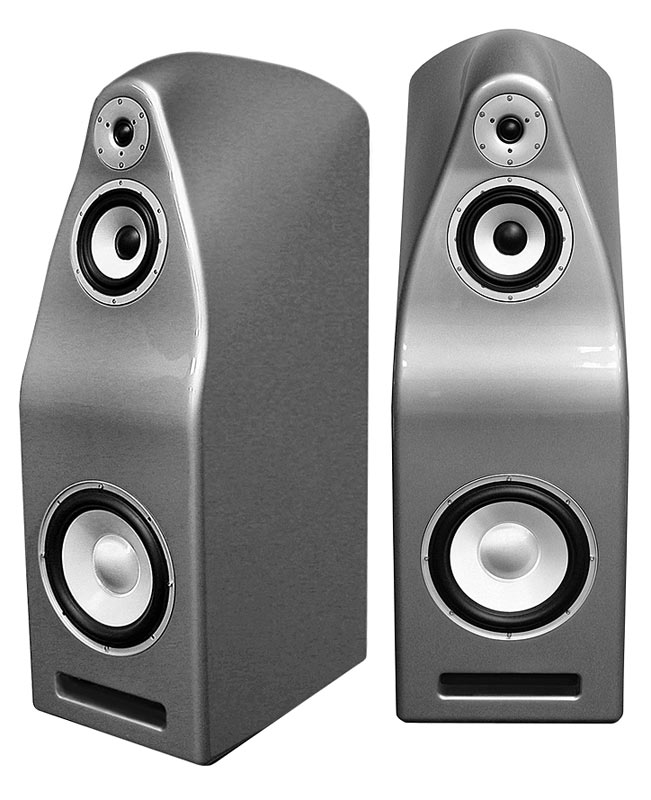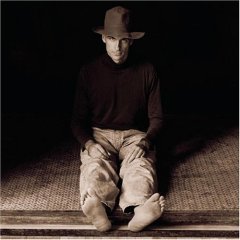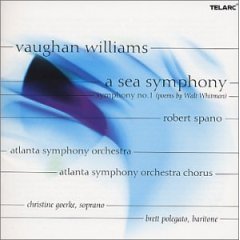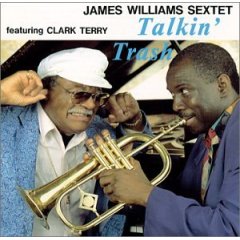Hansen The Prince V.2 Loudspeaker
| Hansen The Prince V.2 Loudspeaker |
| Opening The Great Door |
|
|
|
March 2008 |

“There is another kind of seeing that involves a letting go. When I see in this way I sway transfixed and emptied. The difference between the two ways of seeing is the difference between walking with and without a camera. When I walk with a camera I walk from shot to shot, reading the light on a calibrated meter. When I walk without a camera, my own shutter opens, and the moment’s light prints on my own silver gut.”
Annie Dillard, writing in her extraordinary book, Pilgrim At Tinker Creek (Harpers Press) teaches about a way of seeing Nature that does not involve the studying, analyzing or prying of what is observed. Rather, it involves the quelling of our “inner commentator.” For Dillard, Seeing in this purely present and exhilarating way is the greatest of gifts (for those who wait for it): “When I see in this way I see truly. As Thoreau says, I return to my senses.” For instance, she describes walking one day at twilight and seeing a cedar tree “with the lights in it.” The tree was at that moment ablaze with reflected sunlight, which vanished as quickly as it had begun due to the sun’s failing light. To be able to truly See the “tree with the lights in it”, Dillard talks of allowing “the Great Door to the present to open” not being consumed with one’s inner thoughts or self consciousness, but wholly focused on that present, fleeting moment. “It is at once a receptiveness and total concentration … It is less like seeing than like being for the first time seen, knocked breathless by a powerful glance.”
One of the great joys in listening to live or recorded music is the opportunity to Hear in the same way as Dillard eloquently describes her way of Seeing: “a pure devotion to an object”, fully engaged in the innocent, present moment, open to every fleeting musical idea and dynamic. In our audio systems, it is the loudspeaker, (with its ability to transport the listener to a three dimensional world of Sound), that may be the most important conduit that can make, (or break) this Hearing in the purely present. If a loudspeaker is not up to the task, either because of a failure of coherency, pitchless bass, midrange colorations or unnatural treble performance, the ability to truly Hear our favorite recordings is like Dillard seeing her “tree with the lights in it” but then having it “vanish, uprooted from the spot and flung out of sight as if it had never grown.” On the other hand, if a loudspeaker design is special, and if its associated electronics are a good fit, there is the possibility of this gift of truly Hearing music in this exhilarating, ever-present sense. Which brings us to the loudspeaker that would be dear to Annie’s Dillard’s heart, as it is to mine: the Hansen Prince v.2 Loudspeaker (the “Prince”).
Meticulous Preparations
The philosophy behind the Canadian company, Hansen, and its energetic founder, Lars Hansen, is to produce loudspeaker systems “with meticulous attention to materials and workmanship with the goal of producing a musical signal as faithfully as possible, allowing for the purest enjoyment of the original musical event.” The Prince stands one royal tier below the statement King v.2 loudspeaker (the King”) in the Hansen Kingdom, but it shares many of the refined design features of the King, as well as its exquisite enclosure. The Prince is a three way, said to extend to 23Hz and upwards of 23,000 Hz, with an impedance of 6 Ohms and a sensitivity of 87dB. All of its drivers, (except for the 25 mm. high precision tweeter), are designed and manufactured in house at Hansen’s Ontario headquarters. The Prince and the King share identical driver designs. The tweeter’s exact composition is not revealed, but what is known is that the manufacturer who supplies it to Hansen utilizes a complex configuration of magnets without the use of ferrofluid as a coolant (unlike many other high end tweeter designs), thus allowing its voice coil total freedom of movement within its enclosure. Hansen states that all the other drivers in the Prince are designed to mate perfectly with this high precision tweeter. Their unique driver cones are composed of a complex sandwich, with a first layer of resin mixed with glass fibers (forming an incredibly inert material), a second layer of Rohacell (an extremely light material) and a third layer similar to the first, with a different density. These specialty cones are then suspended within Hansen’s architectural frames utilizing precision rubber surrounds and then attached to Hansen’s proprietary motor assembly, a product of years of research to achieve the most accurate tracking possible. Each of the Prince’s drivers is said to be capable of operating more than two octaves beyond its crossover point, both low and high.
Adding to the sophistication of this design is the Prince’s astonishing enclosure, identical again to the King. It is made of multiple layers (each composed of up to 6 different materials) that Hansen has dubbed its “Composite Matrix Material.” In its V.2 incarnation, Hansen has added to this Matrix a new layer of acoustic dampening material. Each layer is meticulously hand applied into a mold of optimum thickness and then the entire enclosure is finished with a high gloss “Class A” finish, creating a gleaming, statuesque enclosure. The Prince in striking silver finish is a sight to behold in any living space. It is critical to note, however, that the Prince does not dominate a living space as so many other large reference floorstanders inevitably do. The Prince is surprisingly compact in form, perfect for a medium sized room. Moreover, the Prince is very easy to position. Following Harry Pearson’s “Rule of Thirds”, and sitting anywhere from 7 to 10 feet at the head of the established triangle, the Prince required very little manipulation to hit its stride beautifully. The Prince performed optimally with a good deal of power driving it. It was also an extremely revealing loudspeaker clearly articulating even the slightest changes in the audio chain before it.
A Single Minded Trek
Everywhere I turned in my auditions of the Prince I was reminded of Annie Dillard’s exuberant prose about “catching it while you can”, that fleeting gift of truly Seeing Nature in a fully engaged, exhilarating way.  First, I took a listen to James Taylor’s ode to Mother Earth herself, “Gaia,” from his Hourglass CD [Columbia 67912). This particular cut is an absolute sonic marvel, from the peaks of its soaring soprano sax to its huge, layered soundstage with Taylor’s distinctive voice silhouetted against hushed background vocals. Halfway through this marvelous trek, Taylor uncorks a huge bass drum that reverberates into a cavernous space, testing any loudspeaker’s pitch definition and bass depth. I have heard this piece with several, massively built reference loudspeaker systems but none played it with such a dynamic, coherent picture as the Prince accomplished. Sound projects and leaps naturally from the Prince (without any sense of compression), most noticeably in its all-important midrange.
First, I took a listen to James Taylor’s ode to Mother Earth herself, “Gaia,” from his Hourglass CD [Columbia 67912). This particular cut is an absolute sonic marvel, from the peaks of its soaring soprano sax to its huge, layered soundstage with Taylor’s distinctive voice silhouetted against hushed background vocals. Halfway through this marvelous trek, Taylor uncorks a huge bass drum that reverberates into a cavernous space, testing any loudspeaker’s pitch definition and bass depth. I have heard this piece with several, massively built reference loudspeaker systems but none played it with such a dynamic, coherent picture as the Prince accomplished. Sound projects and leaps naturally from the Prince (without any sense of compression), most noticeably in its all-important midrange.
Taylor’s vocals and intonations were not only crystal clear and timbre – neutral, but projected naturally from an underpinning of delicate instrumental color that was all of one piece, a perfectly coherent musical whole. Nothing artificially stands out of the mix, from soaring, glare free soprano sax on top, to a brief swell of cello color below. Notes begin, bloom and decay naturally and precisely, without any overhang or lingering artificial coloration or lack of clarity. When that huge bass drum unleashed its ferocious clap of thunder throughout Taylor’s mountain range, I felt the pressure right up in my chest as only the most dynamic, tuneful low bass can provide. The deep foundation was there in all of its glory and precision with the Prince, (even at low volume), the very best I have heard in my room. I could not believe such thunderously low bass precision and power could be delivered by such a relatively diminutive enclosure sitting just seven feet away. Like Seeing Dillard’s “tree with the lights in it” the Prince offered the whole shebang of Taylor’s composition, the complete sonic picture wrapped in a perfect coherent whole, top to bottom, with all its inner workings and sweeping majesty.
 Speaking of majesty, there is nothing more majestic than the writing of Walt Whitman incorporated into Vaughan William’s sprawling musical vision of the Sea, in A Sea Symphony performed by Robert Spano and the Atlanta Symphony and Chorus [Telarc 80588]. The first movement, “A Song For All Seas, All Ships,” could serve as the sole piece to review every aspect of the Prince’s sonic virtues. Up top, the soprano voice of Christine Goerke was absolutely gorgeous, with fragility, tenderness and silkiness that sailed over the musical action below. The Prince’s tweeter is a stunner, totally grain free and extended. It has the uncanny ability to stop and start on a dime, going from perfect silence to capturing the shimmer and decay of the highest triangle strike without any artificial hangover or discernable coloration. In Vaughn William’s vision of the rolling Sea, crashes of cymbals swelled from silence to silvery crescendo to eventual decay without any hint of metallic hardness or brightness.
Speaking of majesty, there is nothing more majestic than the writing of Walt Whitman incorporated into Vaughan William’s sprawling musical vision of the Sea, in A Sea Symphony performed by Robert Spano and the Atlanta Symphony and Chorus [Telarc 80588]. The first movement, “A Song For All Seas, All Ships,” could serve as the sole piece to review every aspect of the Prince’s sonic virtues. Up top, the soprano voice of Christine Goerke was absolutely gorgeous, with fragility, tenderness and silkiness that sailed over the musical action below. The Prince’s tweeter is a stunner, totally grain free and extended. It has the uncanny ability to stop and start on a dime, going from perfect silence to capturing the shimmer and decay of the highest triangle strike without any artificial hangover or discernable coloration. In Vaughn William’s vision of the rolling Sea, crashes of cymbals swelled from silence to silvery crescendo to eventual decay without any hint of metallic hardness or brightness.
Notably, all of this high treble voice and instrument action remained perfectly seamless and coherent within the complexity of musical action below. In the midrange, the swells of Vaughn William’s ocean waves are created by huge crescendos of strings and shining brass underneath Goerke and Brett Polegato’s baritone. The Prince rendered these mass groups of violins, violas and cellos fast and articulate, with beautiful silky textures. Woodwinds were also lovely and uncolored, articulate in their individual spaces. Down deep, the double basses and bass drums were another highlight: full, articulate and extremely visceral in their massive roiling and bowing; precise and coherent in the full picture of wind and waves. The Prince rolled out a bass foundation that was always supportive of the action above it. Even at low volume, the Prince offered the entire spectrum of Vaughn William’s grand vision: here was the full sonic picture in all of its bombastic, dynamic power, as well as its most innermost musical details. Finally, the soundstage provided by the Prince was as panoramic and layered as Vaughn William’s vision of the Sea: spectacular and deep. Also noteworthy was the Prince’s placement of the Atlanta Symphony Chorus deep in the stage, yet it also provided for that special spatial layering and definition so that one could explore each section of this glorious chorus across Vaughn William’s wide canvas.
 Juxtaposed to Vaughn William’s sprawling ode to the Sea is the intimacy of Oregon’s beautiful portrait of Mother Nature, in their piece entitled “Green and Golden” recorded live on their CD, “Live At Yoshi’s” [Intuition 3299] and also recorded by the (always) crack team at Chesky Records, on theirBeyond Words [Chesky JD130]. One of the secrets of Oregon’s brilliance is the synergy, timing and chemistry between its members, who have been playing as a unit for dozens of years. There is a give and take, a musical camaraderie that is a joy to Hear. Oregon and the Prince share a common bond: all musical action is in seamless motion and always of one, unified musical piece; improvisation at its best. On both of these Oregon recordings, the Prince seamlessly captured each musician’s onstage position, uncovered all of the intricacies of their individual and joint artistry, and snared the acoustic of each recording venue. Most intriguing, the Prince was able to convey the use of silences between musical phrases. At one point on “Green and Golden,” Ralph Towner interrupts a particular phrase on his acoustic guitar, letting it linger long enough to be picked up delicately by Paul McCandless on his soprano sax. With other loudspeakers, the whole fabric of this exchange can be disjointed or unnaturally blended. Not so with the Prince, with its stunning clarity and speed. Let’s also not forget bassist Glen Moore, whose patented plucks, surprise rhythmic changes and deep plunges, (spotlighted beautifully on “Leather Cats” from Beyond Words) are simply devoured by the Prince, transmitting these bass lines with sheer force, dynamic pitch definition and huge surrounding air. Once again, with its prodigious bass foundation, the Prince offers the whole (coherent) enchilada (top to very bottom), drawing us in.
Juxtaposed to Vaughn William’s sprawling ode to the Sea is the intimacy of Oregon’s beautiful portrait of Mother Nature, in their piece entitled “Green and Golden” recorded live on their CD, “Live At Yoshi’s” [Intuition 3299] and also recorded by the (always) crack team at Chesky Records, on theirBeyond Words [Chesky JD130]. One of the secrets of Oregon’s brilliance is the synergy, timing and chemistry between its members, who have been playing as a unit for dozens of years. There is a give and take, a musical camaraderie that is a joy to Hear. Oregon and the Prince share a common bond: all musical action is in seamless motion and always of one, unified musical piece; improvisation at its best. On both of these Oregon recordings, the Prince seamlessly captured each musician’s onstage position, uncovered all of the intricacies of their individual and joint artistry, and snared the acoustic of each recording venue. Most intriguing, the Prince was able to convey the use of silences between musical phrases. At one point on “Green and Golden,” Ralph Towner interrupts a particular phrase on his acoustic guitar, letting it linger long enough to be picked up delicately by Paul McCandless on his soprano sax. With other loudspeakers, the whole fabric of this exchange can be disjointed or unnaturally blended. Not so with the Prince, with its stunning clarity and speed. Let’s also not forget bassist Glen Moore, whose patented plucks, surprise rhythmic changes and deep plunges, (spotlighted beautifully on “Leather Cats” from Beyond Words) are simply devoured by the Prince, transmitting these bass lines with sheer force, dynamic pitch definition and huge surrounding air. Once again, with its prodigious bass foundation, the Prince offers the whole (coherent) enchilada (top to very bottom), drawing us in.
Coming Home
At the end of this nature trail, I’ll conclude by evoking something totally out of place on such a serene Nature walk with Annie Dilliard: I am “Talkin Trash” here, provided by the amazing and sorely missed jazz pianist, James Williams, and his Sextet (featuring the great Clark Terry on trumpet and flugelhorn) from their gem of a recording of the same name [DIW Records 470150].  “Talkin Trash” is a rollicking cut, featuring a ferocious Tony Reedus snare beat, a driving Christian McBride bass line and Terry floating over it all with his patented “talk” of mouth movements, whistles, and tongue in cheek hits (including his patented “liver lips”). Terry takes on McBride in a duel of vocals, laughter and bass plunges (with Reedus refereeing with his light cymbal taps) and Steve Nelson letting loose on vibes. Terry ends the number with all sorts of vocal cacophony, including blowing air in our ears. Once again, the Prince’s agility in maintaining the stable position of the players, the bombast and definition of bass chords along with the delicacy and subtle details of Terry’s vocal artistry, was astonishing. This was the complete, coherent package, offering the listener every nuance, true timbre and highest reach without glare, congestion or compression.
“Talkin Trash” is a rollicking cut, featuring a ferocious Tony Reedus snare beat, a driving Christian McBride bass line and Terry floating over it all with his patented “talk” of mouth movements, whistles, and tongue in cheek hits (including his patented “liver lips”). Terry takes on McBride in a duel of vocals, laughter and bass plunges (with Reedus refereeing with his light cymbal taps) and Steve Nelson letting loose on vibes. Terry ends the number with all sorts of vocal cacophony, including blowing air in our ears. Once again, the Prince’s agility in maintaining the stable position of the players, the bombast and definition of bass chords along with the delicacy and subtle details of Terry’s vocal artistry, was astonishing. This was the complete, coherent package, offering the listener every nuance, true timbre and highest reach without glare, congestion or compression.
Like Annie Dillard writing about Seeing a flock of starlings in flight overhead (with thousands of birds remaining perfectly spaced, as she “stood with difficulty, bashed by the unexpectedness of this beauty”), the Prince does not allow complacency in listening; it demands full attention and offers exhilarating rewards to those who wait and Hear. The Prince is my favorite reference loudspeaker to date, hands down. It is an unprecedented dynamic marvel in its compact, gorgeous enclosure. The Prince proves that Hansen Audio is clearly on to something very special in loudspeaker designs. The Prince is also, unfortunately, very expensive and as the dollar falls, continues to become more so. Although out of financial reach for most of us, I still highly recommend and encourage an audition of any loudspeaker in the Hansen kingdom (including their newest, less expensive model, the Knight), for a taste of this unprecedented, exhilarating Listening experience from Hansen Audio. As Annie Dillard implores: “Catch it if you can!”

####
Specifications:
Frequency Response: 23Hz-23,000 Hz (+/-2dB)
Sensitivity: 87dB
Impedance: 6 Ohms
Termination: mono binding posts
Cabinet Finish: Hansen Class “A” luxury silver or black
Dimension: (H x W x D) 42” x 14” x 20”
Weight: 230 lbs
Price: $39,000
Company Information
Hansen Audio Inc.
100 Leek Cres. Unit 9 Richmond Hill, ON. Canada L4B3E6
Tel: (905) 731-8434
Website: www.hansenaudio.com
USA:
Wes Bender
Tel: (917) 803-5488
E-mail: wesb@hansenaudio.com
![]()
Don’t forget to bookmark us! (CTRL-SHFT-D)
Stereo Times Masthead
Publisher/Founder
Clement Perry
Editor
Dave Thomas
Senior Editors
Frank Alles, Mike Girardi, Russell Lichter, Terry London, Moreno Mitchell, Paul Szabady, Bill Wells, Mike Wright, and Stephen Yan,
Current Contributors
David Abramson, Tim Barrall, Dave Allison, Ron Cook, Lewis Dardick, John Hoffman, Dan Secula, Don Shaulis, Greg Simmons, Eric Teh, Greg Voth, Richard Willie, Ed Van Winkle, Rob Dockery, Richard Doran, and Daveed Turek
Site Management Clement Perry
Ad Designer: Martin Perry





Be the first to comment on: Hansen The Prince V.2 Loudspeaker